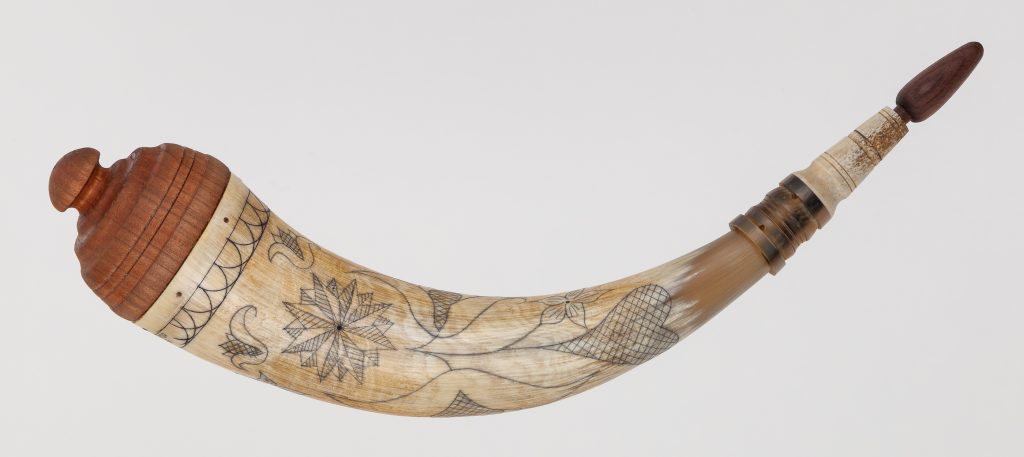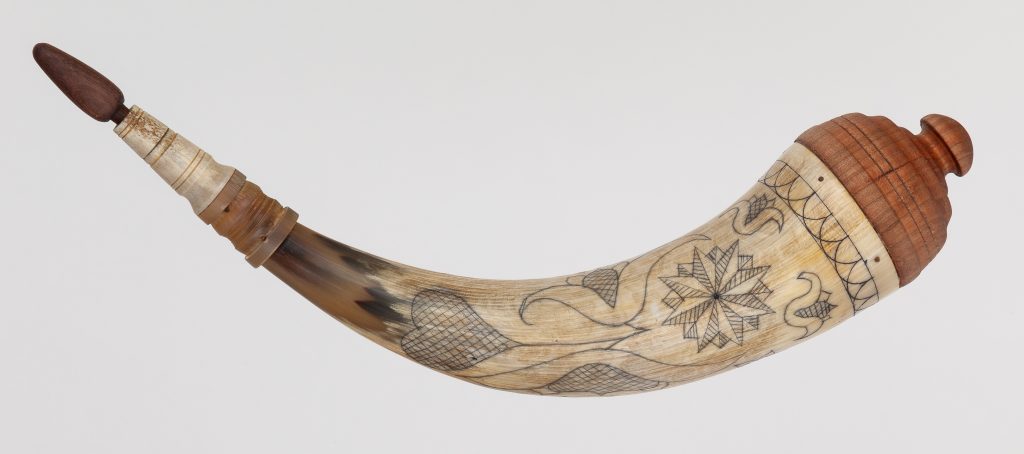I am doing scrimshaw horns right now and this one is more traditional fraktur with geometric designs and stylized flowers. I skipped the color on this one except for the ferric nitrate stain giving a little yellow color to the horn.
This right hand horn is 14″ around the outside curve and 11.5″ tip to tip, not including the stopper. The cherry base plug is 2.48″ in diameter. The tip is horn and antler. The stopper is walnut. While this is a traditional right hand horn. the engraved panels are positioned so that they look right when the horn is worn on either side.
If you like this, perhaps you might be interested in some of my other fraktur such as my Birth/Baptismal/Marriage Certificates or paintings.
Right or Left Hand Carry?
What is right or left hand carry? Simply, it is the side of the body on which a horn is intended to be worn. Historically, a curve of the tip to the left as viewed from the top is a right hand carry horn and also from the right side of the cow. A curve of the tip to the right would historically be a left hand carry horn and from the left side of the cow. If there is no significant curve of the horn as viewed from the top, then the horn can be easily worn on either side with no conflict. Most horns have so little curve it really doesn’t matter much and the modern pattern of carry is frequently opposite of the historical pattern.
Carrying a horn on the same side of the body as it came from the cow results in the tip pointing toward the body and the base pointing away from the body. I also like the base of the horn to point to ward the body, as do many modern wearers, so I usually use the opposite side horn and rotate it about 90 degrees so that both the tip and the base of the horn point into the body. This makes a horn from the left side of the cow into a powder horn you can carry on the right side of the body. This is my personal preference, but not generally historically correct. Historically, powder horns were usually carried on the same side of the body as they came from on the cow. If you want to be completely historically correct, you need to understand that.
Sometimes a horn that is technically a left hand horn might wrap around the body better on the right hand side and vice versa. So, in describing a horn, I will tell you whether a horn is historically a left hand or a right hand. Then I will tell you on which side the horn was built to be carried, if it is different. I will also try to include a photo from the top of the horn so you can see the curve for yourself. On which side you actually carry a horn, that is up to you.




